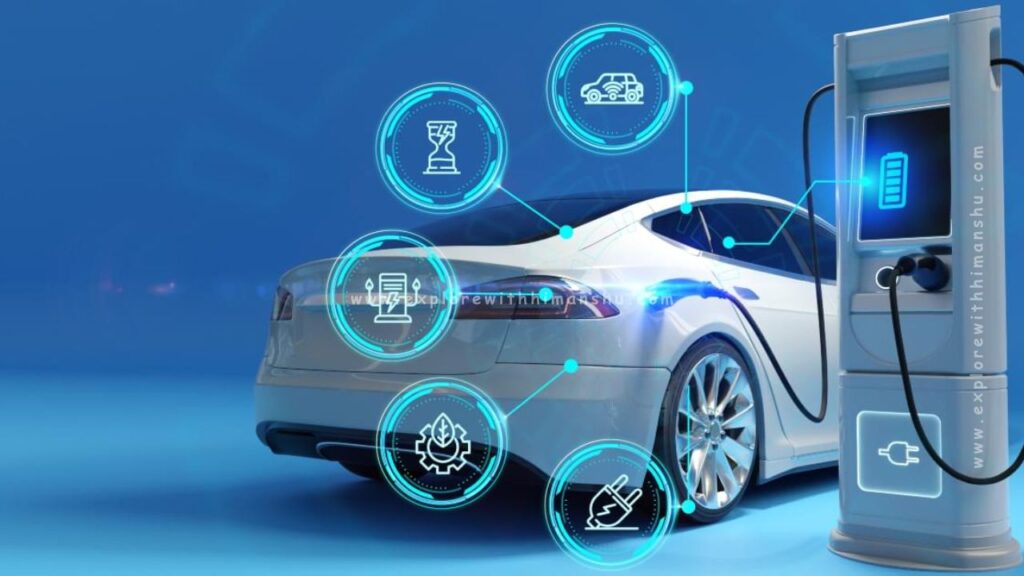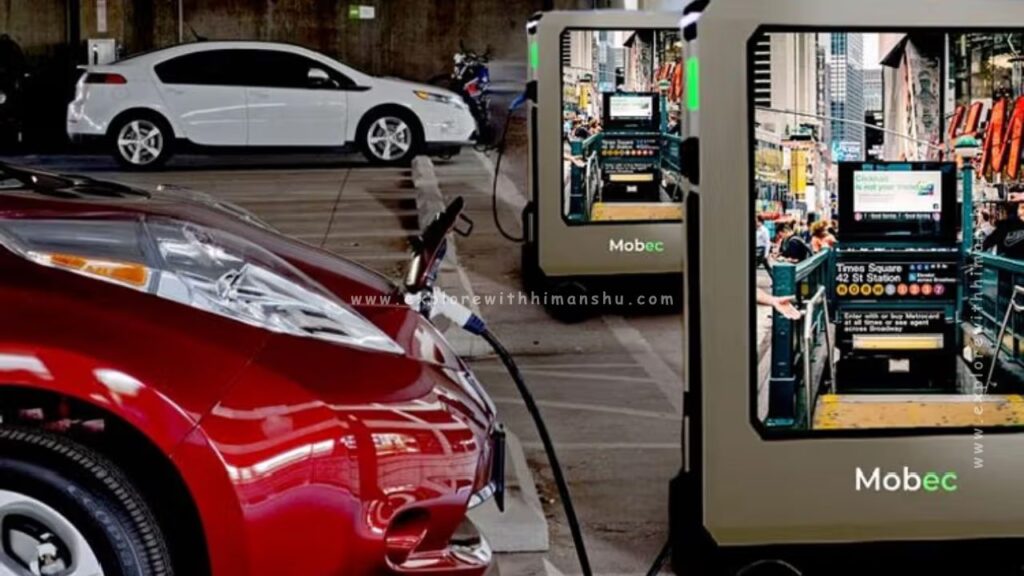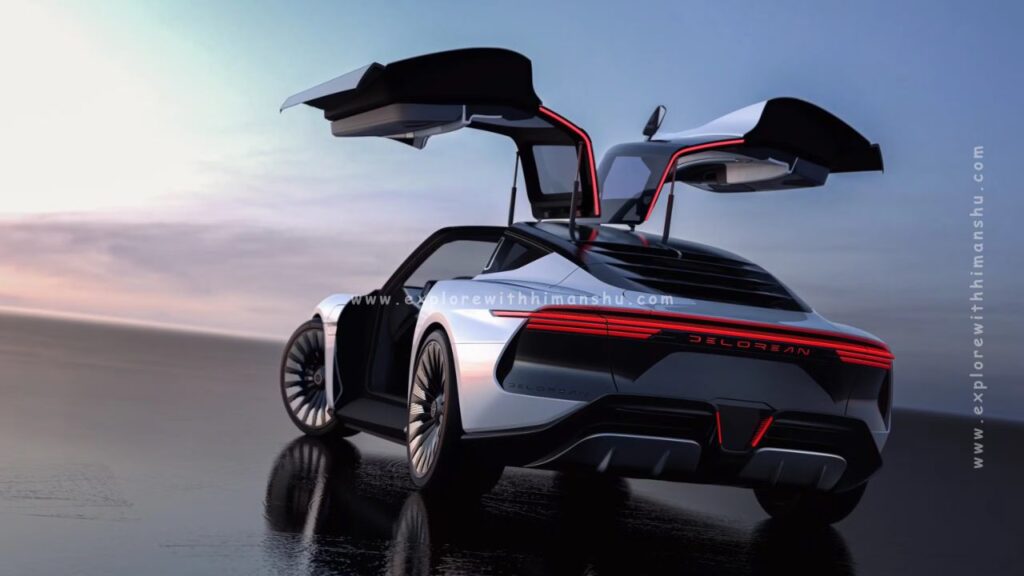Introduction
The electric vehicle (EV) industry is experiencing a revolution, pushed by means of improvements in technology, environmental issues, and the worldwide push toward sustainable transportation. As we step into 2025, the EV Cars marketplace is now not a spot segment however a mainstream opportunity to conventional internal combustion engine (ICE) vehicles. Governments, automakers, and customers are more and more embracing EVs, leading to improvements in battery generation, charging infrastructure, and car overall performance.
Explore the future of EV cars in 2025 with cutting-edge innovations, emerging trends, and sustainability advancements. Discover how electric vehicles are transforming transportation with improved battery technology, autonomous driving, and eco-friendly solutions.
This blog provides a comprehensive analysis of the latest EV Cars models, technological breakthroughs, market trends, and future projections, offering insights into how the EV revolution will shape our world.

1. The Evolution of EV Cars
Electric vehicles have come a long way since their inception. The journey from early electric prototypes to the modern, high-performance EVs has been shaped by innovation, environmental policies, and consumer demand.
1.1 A Brief History of Electric Vehicles
| Year | Milestone |
|---|---|
| 1828 | First electric vehicle prototype developed |
| 1889-1891 | First practical EV built by William Morrison |
| 1996 | General Motors releases the EV1 |
| 2008 | Tesla Roadster launches, revolutionizing the EV market |
| 2021 | Global EV sales surpass 6.6 million |
| 2025 | Predicted rise in EV adoption with advanced charging networks |
The industry’s shift from experimental models to mass-market adoption has been driven by improved battery technology, government incentives, and increasing environmental awareness.
The Best Smartphones of 2025: A Comprehensive Guide
2. Latest EV Models in 2025
The EV Cars market in 2025 is flooded with cutting-edge models from various automakers, each offering better performance, range, and affordability. Some of the most anticipated EVs of 2025 include:
2.1 Top Electric Cars of 2025
| Model | Manufacturer | Battery Range | Top Speed | Price (Estimated) |
|---|---|---|---|---|
| Tesla Model S Plaid+ | Tesla | 520 miles | 200 mph | $130,000 |
| Lucid Air Pure | Lucid Motors | 430 miles | 155 mph | $87,400 |
| Ford Mustang Mach-E GT | Ford | 312 miles | 124 mph | $63,000 |
| Rivian R1T | Rivian | 400 miles | 110 mph | $74,000 |
| Mercedes EQS | Mercedes-Benz | 450 miles | 130 mph | $102,000 |
Each of these vehicles features significant advancements in battery efficiency, autonomous driving technology, and rapid charging capabilities.

3. Innovations in EV Technology
3.1 Next-Generation Battery Technology
One of the biggest challenges for EVs has been battery efficiency and charging time. However, advancements in solid-state batteries, lithium-sulfur technology, and graphene-based batteries are revolutionizing the industry.
| Battery Type | Benefits |
|---|---|
| Solid-State Batteries | Higher energy density, faster charging |
| Lithium-Sulfur Batteries | Lightweight, cost-effective |
| Graphene-Based Batteries | Longer lifespan, improved performance |
3.2 Fast Charging and Wireless Charging
The charging infrastructure is rapidly evolving, with new ultra-fast charging stations reducing charge times to as low as 15 minutes for an 80% charge. Wireless charging technology is also becoming a reality, allowing for seamless energy transfer.
4. Market Trends and Adoption Rates
The global adoption of EVs is accelerating, fueled by government policies, subsidies, and increased consumer interest.
4.1 Global EV Market Growth
| Year | EV Sales (Million) | Market Share |
|---|---|---|
| 2020 | 2.1M | 4% |
| 2023 | 6.6M | 10% |
| 2025 (Projected) | 12M+ | 20% |
4.2 Government Policies and Incentives
Many countries are offering incentives such as tax credits, rebates, and free charging stations to promote EV adoption. Countries like Norway, China, and the US lead in EV adoption rates.

5. The Future of EV Cars
The EV Cars industry is set to transform further with the integration of autonomous driving, AI-powered road safety, and improved charging solutions. The next decade will see:
- Widespread adoption of autonomous electric vehicles
- Expansion of solar-powered EVs
- Integration of blockchain for secure EV transactions
- Hyper-fast charging stations reducing downtime significantly
Case Study: Tesla’s Self-Driving EV Fleet
Tesla is at the forefront of autonomous EV technology, with its Full Self-Driving (FSD) capabilities improving each year. By 2030, Tesla envisions a fully autonomous ride-sharing network, replacing traditional car ownership.
Self-driving electric cars will transform ride-hailing services, reduce traffic congestion, and increase road safety. AI-driven driver-assistance systems will enhance navigation, accident prevention, and overall driving efficiency. With the integration of advanced sensors, LiDAR technology, and real-time data processing, autonomous EVs will become a reality sooner than expected.
How AI is Transforming Web Development in 2025 and Beyond: Trends, Benefits, and Case Studies
Conclusion
The future of electric vehicles is bright, with innovations in battery technology, autonomous driving, and charging infrastructure driving the industry forward. As we approach 2025, EVs are set to become more affordable, efficient, and widely adopted. Businesses and consumers alike must prepare for this shift and embrace the new era of sustainable transportation.
One of the number one driving forces in the back of the EV revolution is the want to reduce carbon emissions and combat climate exchange. Traditional inner combustion engine (ICE) vehicles contribute drastically to global pollutants, and the shift to electric transportation is essential in decreasing greenhouse gas emissions. Countries international are imposing guidelines and policies to phase out gas and diesel automobiles, encouraging the adoption of EVs through incentives, tax benefits, and stricter emission standards.
The environmental advantages of EVs pass past simply reducing carbon footprints. Electric cars additionally assist lower noise pollution, leading to quieter, extra peaceful city environments. Moreover, with the combination of renewable electricity sources including sun and wind electricity into EV charging stations, the enterprise is operating in the direction of growing a very sustainable transportation surroundings.
Governments, automakers, and tech companies must collaborate to overcome challenges related to infrastructure, battery disposal, and charging accessibility. With the right strategies in place, EVs will not only revolutionize the automotive sector but also contribute to a greener, cleaner planet.
One of the major challenges EVs have faced inside the beyond is battery efficiency, range, and charging time. However, with continuous studies and improvement, battery generation has stepped forward notably. Solid-state batteries, as an instance, are anticipated to update conventional lithium-ion batteries, imparting higher energy density, quicker charging times, and multiplied longevity. These advancements will eliminate range anxiety and make EVs a greater realistic choice for clients global.
The future of EVs is not just about electrification but also about autonomy. AI-powered autonomous vehicles are set to revolutionize transportation by making driving safer, more efficient, and convenient. Major automakers and tech companies are investing billions into self-driving technology, with EVs leading the way in autonomous vehicle (AV) development.
As the world moves towards a sustainable future, the role of electric vehicles in reducing carbon emissions and promoting clean energy cannot be understated. The shift towards EVs represents a collective effort to build a better, more efficient world for future generations.
What are your thoughts on the future of electric vehicles? Share your opinions in the comments below!


